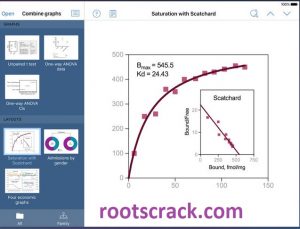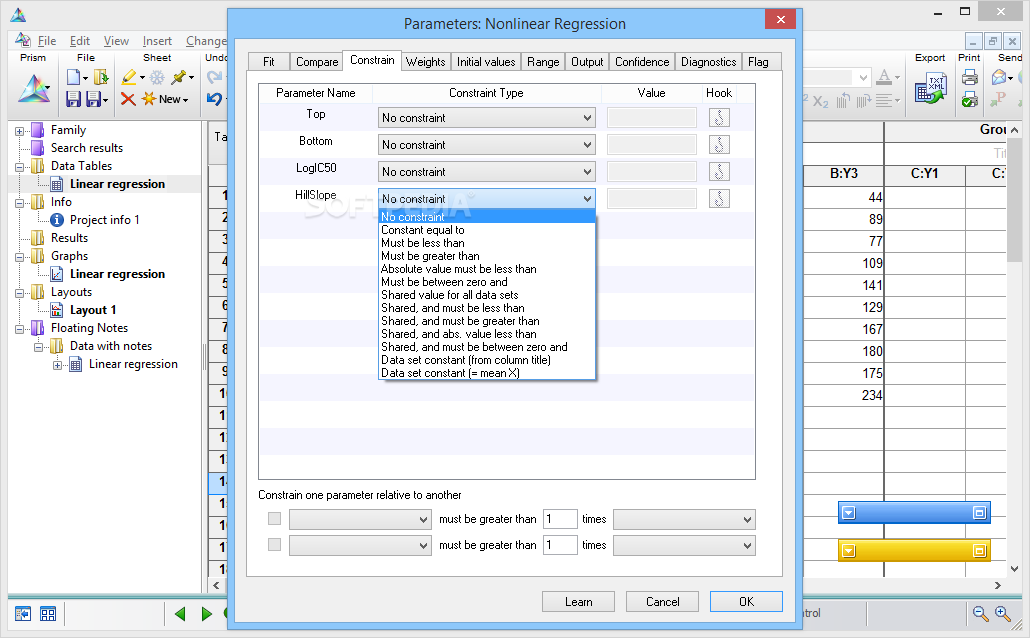


Choose the size, shape and color of your data points right from the data table. View and edit all of your column titles at once. Want to plot alternating columns as dotted lines? Now you can do it in one step. Faster saving, faster closing, faster nonparametric calculations, faster graphing, faster, crisper screen redraws. This lets you compute repeated measures two-way ANOVA with more subjects. Enter up to 256 subcolumns per data set (up from 52 in Prism 5). Enter data in up to 256 data set columns. Compute each value as a fraction or percentage of the column total. Compare the observed distribution of values with theoretically expected values with the chi-squared or binomial test. Prism 6 adds a new kind of data table for parts of whole data. Monte-Carlo simulations without writing scripts. Prism 6 adds a new analysis that streamlines the process of interpolating values from standard curves.

Fit to implicit and differential models. Kolmogorov-Smirnov test to compare two groups (an alternative to the Mann-Whitney test). Our most popular QuickCalc web calculator is now part of Prism. Greenhouse-Geisser correction in repeated measures one-way ANOVA to avoid the need to assume sphericity. Don't worry if you don't know what that means - Prism 6 presents those choices graphically so the meaning is obvious. Follow two-way ANOVA with tests for simple or main effects. Run a set of t tests (one per row) at once, correcting for multiple comparisons with Bonferroni or by contolling the False Discovery Rate (FDR). New post tests - Fisher’s unprotected Least Significant Difference (LSD) and Holm-Sidak. Multiplicity adjusted (“exact”) P values for multiple comparison tests. Two-way ANOVA with repeated measures in both factors. New Analyses – ANOVA, multiple comparisons and more But Prism is still Prism! You can switch to Prism 6 with almost no learning curve, and can try the Prism 6 demo without removing Prism 5. Prism 6 offers more statistical analyses, more kinds of graphs, better learning tools and is more efficient to use. It is also widely used by undergraduate and graduate students. More than 200,000 scientists in over 110 countries rely on Prism to analyze, graph and present their scientific data. Prism is now used much more broadly by all kinds of biologists, as well as social and physical scientists. GraphPad Prism was originally designed for experimental biologists in medical schools and drug companies, especially those in pharmacology and physiology.


 0 kommentar(er)
0 kommentar(er)
